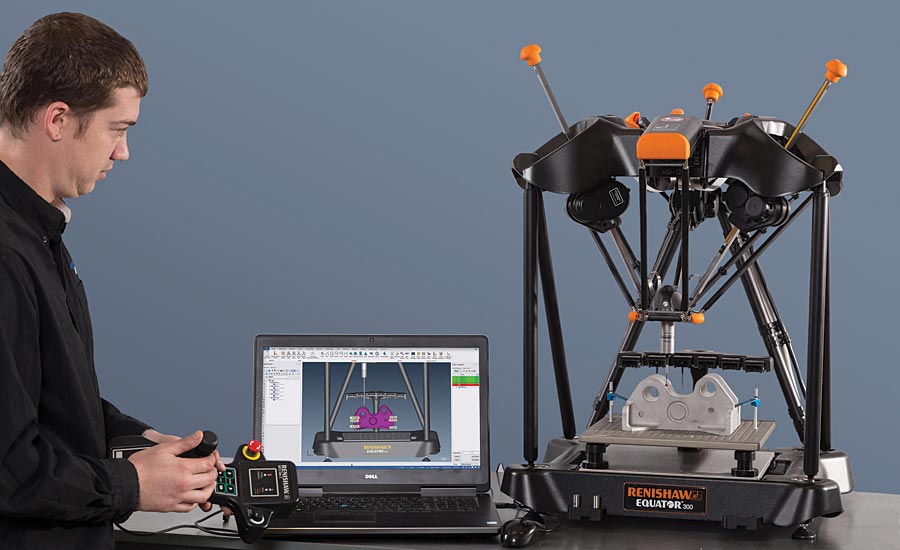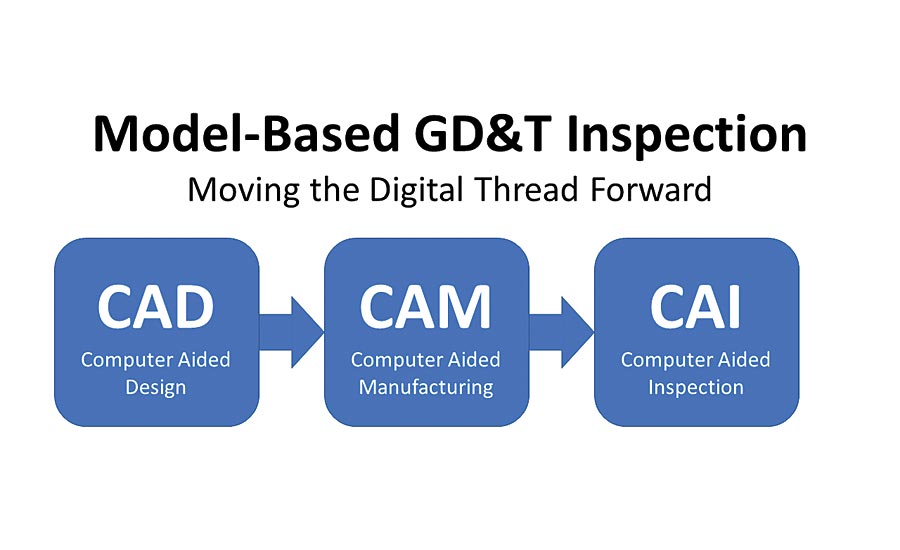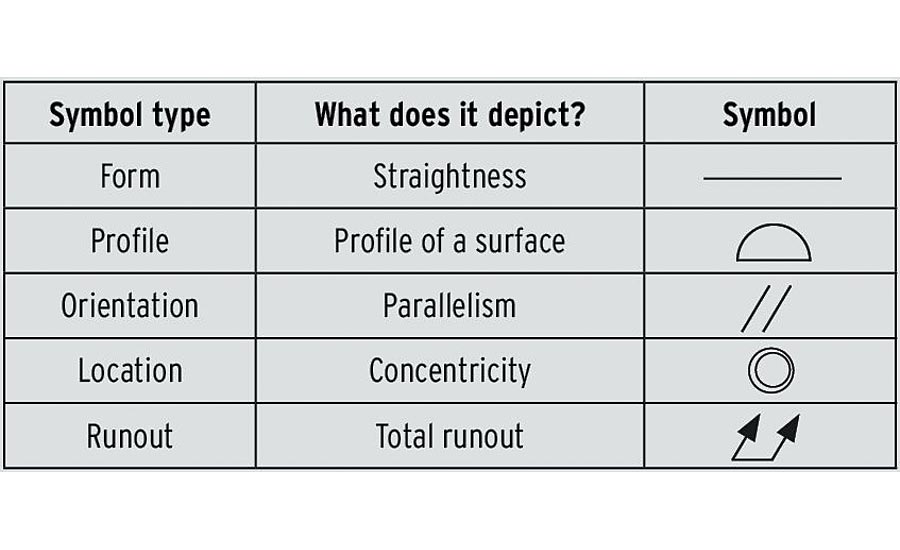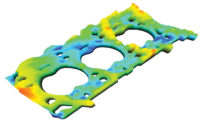Today’s manufacturing industry relies on the use of GD&T definitions, and the ability to verify parts directly to them for first article and production inspection and reporting. Only then do orders ship and the manufacturer gets paid. Price and scheduling are negotiable, quality is not!
Geometric dimensioning and tolerancing (GD&T) is a system of symbols, definitions, and rules used by engineers to communicate design intent through engineering drawings and computer-generated three-dimensional models. The system explicitly describes nominal geometry and its allowable deviation. GD&T is recognized as a universal design language and has been rigorously studied and used by manufacturers around the world. GD&T is not only an essential tool to communicate design intent, it also simplifies and reduces the amount of overall design requirements while maintaining adequate definitions to verify that finished parts have the desired form, fit, function and interchangeability.

This software works with all portable and stationary CMMs; the part being inspected and the CMM are presented in a virtual on-screen environment with GD&T definitions in full view, providing a seamless interface between the physical part and the nominal CAD model.
GD&T definitions are being applied to more part features and attributes today than ever before. A key driver behind this is GD&T is supported by national and international standards that allow for functional dimensioning and to clearly communicate design requirements. Quality, source, and receiving inspectors are now able to verify finished parts to design requirements in minutes; a process that just ten years ago would have taken hours and been deemed impractical in most cases, especially if 100% inspection was required. Advancements in automated quality inspection and reporting is rapidly being adopted throughout all aspects of manufacturing, regardless of process; giving job shops, contract manufacturers, and OEMs the ability to better manage quality expectations, customer, supplier, and vendor performance.
Effective use and benefits of GD&T
- International design language
- Communication of functional intent
- Simplify gaging and tolerance analysis
- Tolerance flexibility with complex geometry
- Modifiers for more tolerance
- Repeatable production and inspection
- Eliminate issues during assembly

Inspection is moving from a process tied exclusively to the quality lab to an integrated part of the digital manufacturing workflow, with the ability to report directly back to the CAD authority through GD&T reporting.
Practical GD&T
There is a lot of confusion and misinterpretation about concepts like digital thread, digital twin, SPC, PLM, etc. Depending on the size of the organization, types of customers or supplier requirements, they can all be important initiatives, but the one thing they all have in common from the get-go is the reliance on GD&T definitions; the building blocks at the foundation of every part that defines its design intent.
If you are looking to get onboard with GD&T, a good starting point is first article inspection and reporting. This offers the greatest and most immediate value to both the supplier and customer who contribute to the concept of maintaining a digital thread that provides upstream and downstream value to the overall manufacturing and purchasing process.
It is important that quality inspection and reporting software import intelligent CAD files, whether two-dimensional or three-dimensional models. The operative word being ‘intelligent,’ which means the imported GD&T is associated to the defined surfaces, features and attributes. In the case where an intelligent CAD file is not available a true CAD-based inspection software can add or modify the GD&T definitions, while maintaining digital consistency.
Design engineers often over annotate CAD models with non-intelligent GD&T callouts, commonly referred to as ‘presentation annotations.’ It becomes the responsibility of manufacturing and quality engineers to determine which annotations preserve the design intent and either edit presentation annotations, making them intelligent, or add intelligent annotations in the inspection plan and subsequent quality reporting.
From a practical standpoint, most parts can be effectively inspected and dimensionally verified using a fraction of the available GD&T standards. This is not to say the complete standard is not important, it is, but understand what is necessary to insure design intent and chose intelligent GD&T definitions wisely. You want enough data to obtain your quality objective, but annotation overkill can slow the inspection process and produce unnecessary data that must be inspected and reported.
Model-Based Inspection using GD&T Data
Measurement and inspection software built on a CAD platform allows for intelligent GD&T data to be directly imported along with the 3D model. When the information is imported from the native CAD system as a GD&T representation, there is an accurate model-based definition (MBD) implementation, and the authority of the dataset is preserved. The same is true if non-intelligent ‘presentation’ GD&T data is imported directly or via IGES or STEP translation and then entered into the inspection application. When the product definition flows from the model through inspection and reporting, the integrity of the quality assurance process is maintained, closing the loop on design intent and implementation by feeding back to the 3D data authority.

The complete GD&T library is extensive, but most parts can be fully defined with just a few of the most common symbols.
Moving the Digital Thread Forward
Through the practical implementation of model-based inspection, using intelligent GD&T definitions, the last fundamental manufacturing processes, inspection, is now digitally connected, providing both immediate and considerable downstream benefits, including feeding statistical process control (SPC) applications to proactively catch parts trending out of tolerance, before they become scrap.
First article inspection using model-based GD&T is quickly becoming a standard business practice for part delivery in many manufacturing sectors, with acceptance of conforming reports triggering production, shipping and payment transactions.

